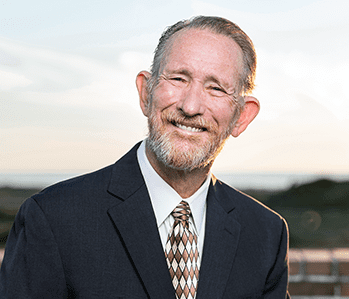
The purpose of this blog is to stimulate thought and discussion about important issues in healthcare. Opinions expressed are those of the author and do not necessarily express the views of CMDA. We encourage you to join the conversation on our website and share your experience, insight and expertise. CMDA has a rigorous and representative process in formulating official positions, which are largely limited to bioethical areas.
App Blogs, Bereavement, and Sadness
Childhood Bereavement—Our Response
October 5, 2023
by Robert E. Cranston, MD, MA (Ethics)
It’s been reported that a total of 8 percent of all children in the United States will experience death of a parent by the time they reach the age of 18 years. If the endpoint of this analysis is 25 years, a total of 14.7 million will experience this tragedy in their lives. Additionally, death of a sibling is a common source of trauma in lives of children. Deaths of a sibling amount to roughly 20 percent as many deaths as those of parents.
The most common causes of death of parents are accidents, heart disease, cancer, suicide and homicide. Stigmatized death (i.e., drug overdose, suicide or homicide) may result in prolonged, complex psychological and physical residua. (A topic for a future blog could focus specifically on stigmatized death.)
For a number of years, my wife Tammy and I volunteered at a one-day camp for bereaved children in mid-America. The camp paired each bereaved child with a “buddy” for the day, (usually an undergraduate student in nursing, pre-med, childhood education or similar field) and they placed the pairs in small groups with a professional facilitator to lead them through the day’s activities. Children were grouped by age, from the youngest at age seven up to age 17. Activities included group sharing, support animals, crafts, games, rock climbing and others. One activity involved shaking up a carbonated drink in a bottle and then opening the lid immediately to see the liquid erupt from the bottle—emphasizing the importance of expressing one’s grief. At the end of the day, children had a chance to light a candle in memory of their loved one, and if they wanted to, they could read aloud a letter to their deceased loved one expressing things they wish they could have said to them. One of the most important aspects of the day was that the children began to realize they were not alone in their grief, but there were others who had and were experiencing similar pain.
We all grieve, feeling pain after the loss of a loved one, but a prominent undertone of the day’s program is that mourning—actually taking measures to express that grief—is an important part of the healing process. This can be especially difficult for those with stigmatized grief, as above. The decision to effectively mourn may be instrumental in safely moving forward—never forgetting the loss, but finding some return to joy.
The camp also held a workshop for parents, grandparents and guardians of the bereaved children. Led by an experienced bereavement coordinator, there was didactic material and time for sharing between the adults as they discussed their particular situations. Some adults chose to primarily listen, but other shared quite openly the issues they were sorting through. This, again, was particularly difficult with those dealing with stigmatized grief. How and when do you share with a child that their dad or mom took their own life? It is very tempting to withhold information, but alternatively, if given at the wrong time or in the wrong way, children can be permanently traumatized. If a surviving parent waits too long to share frankly, others with incorrect information or malicious intent may inform the child before the remaining parent figure can break the news honestly, but with love.
The developmental stage of the surviving child will affect the specific child’s concepts of death, as well as the manner in which the responsible adults help the child process the loss. The Dougy Center: The National Grief Center for Children and Families is an excellent resource for information to help families through this difficult time.
Besides the websites listed above, a number of books and movies are available to help guide families through the journey of grief and mourning. Helpful publications include The Nature of Grief, handouts on specific aspects of grief by Companion Press and, my new favorite, Rooted, a Seedling’s Journey, which is authored by my wife, Tammy Cranston. While not primarily focusing on grief, Tammy’s book follows the life of a young seedling, mentored by a wise old oak, and the generational relationship and resilience that helps the persevering seedling grow through grief. She included 10 open-ended discussion questions to help the child open up with their parent or other significant parent figure about their feelings as they process their loss.
Movies can be helpful for assisting parents and children understand grief and loss. This article lists a number of helpful movies along with guided discussion topics to review together.
As healers, we focus much of our time on physical complaints and ailments, but the pain of personal trauma and grief over the loss of loved ones may be overlooked. We can play an important role in the healing of these people’s lives by actively listening, asking good questions, being present over time and referring our patients to appropriate resources. At times, particularly with complicated grief, professional counseling may be vital and beneficial.
We cannot take away the loss, but we can help in the long healing process. We can address post-traumatic stress and facilitate post-traumatic growth, remembering there is no timetable for this difficult process.

